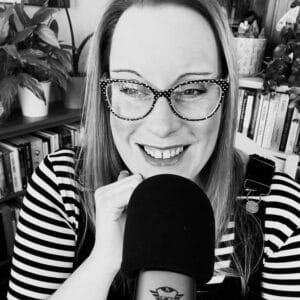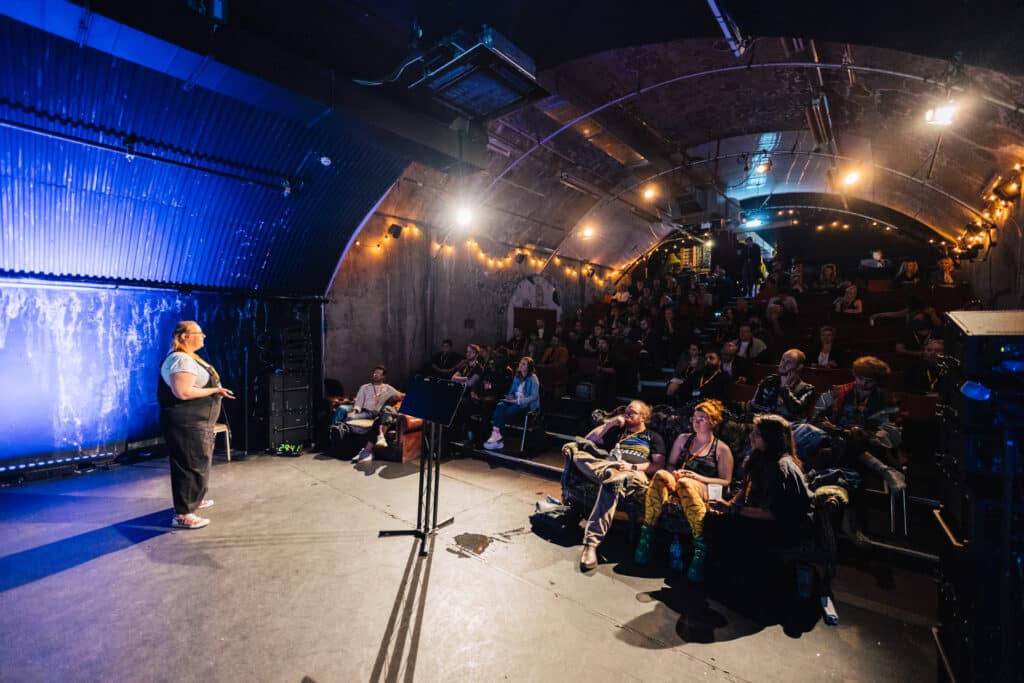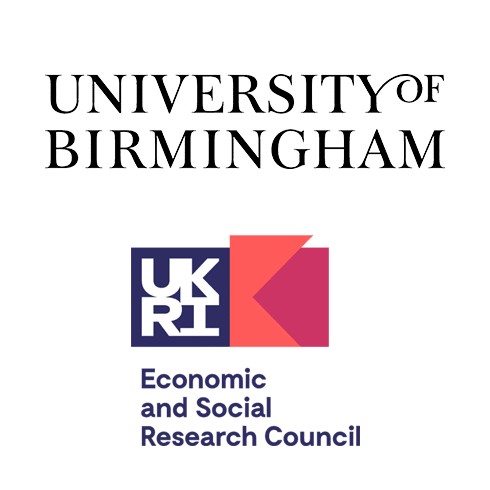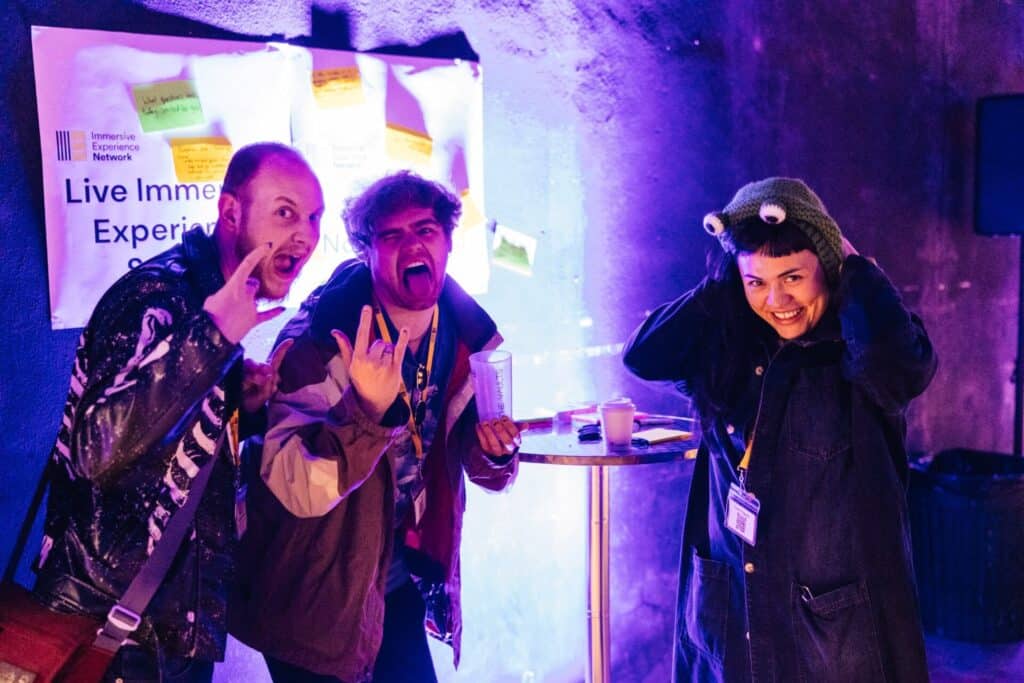The second part of our plan for the coming year is conducting quantitative research focusing on different parts of the immersive sector: the experience of creators, the economic impact of the sector, and the behaviour of audiences. Read on to find out how we’ve identified these areas, and how we plan to carry out the research. The first thing we need for all of the projects is your input – as described below, we will be sending round a brief survey to our entire network (and encouraging you to pass it on) to gather the base level of information we need to begin to build these research aims.
Immersive: A creative sector in its own right
We believe that Immersive Experiences are one of the fastest growing creative sectors in the UK – with perhaps the most unrealised potential in a creative industry since the birth of cinema. While we hope Immersive Creator Huddles will provide a way to access this potential by connecting new collaborators, we also want to begin to quantify it for external audiences through data-driven research.
As the different strands of immersive have developed in the UK, they are often positioned as a niche in an existing cultural segment: immersive theatre within traditional stage shows, experiential art alongside conventional gallery exhibitions, and other immersive experiences as subsets of gaming, tech, or entertainment.
We have seen how this can limit how immersive is marketed – as reviewers try to use traditional metrics to discuss it, and audiences are unsure of what to expect or how to compare an immersive experience to something else they’ve seen. Additionally, we understand the added difficulty in pitching an immersive experience to a new venue, investor, or funder, who can’t appropriately compare the risks and advantages to those of a conventional cultural experience.
A key data point that we think is missing when representing Immersive as its own sector is a clear idea of the size of the market – both in terms of the number of creators making work and the amount of audience members attending immersive experiences. Moreover, the existing impact of immersive on the UK economy has never been formally quantified, so we believe it’s being underestimated. With access to this information, makers would be better equipped to pitch their creative work to new partners and audiences, supporting the sector in reaching its full potential. Additionally, an evidence-based view of the unique challenges and opportunities of immersive could pave the way for immersive-specific training for new and existing practitioners, and spark new creative routes for growth.
We are focusing on 3 major research projects to provide 3 perspectives of the sector as a whole. Vitally, we then want to put the results of these research projects in the hands of creators, equipping them to have the conversations to develop their work and business, armed with a statistical language to do so.

An academic, industrial, and anecdotal approach
We want to look at the Immersive sector through various lenses to get the fullest and most impactful view we can. First and foremost, our aim is to gather together the perspectives of makers themselves. Our first round of research, supported by the ESRC with University of Birmingham as an academic partner, will invite makers to focus groups to look in detail at their creative practice and their approach to developing financially and socially sustainable business models.
The project will investigate similarities and differences between immersive creators working in different genres, and at different scales. As we want the IEN to span both of these axes, we hope that the results, presented as infographics summarising the findings, will offer a comprehensive picture of the immersive landscape which will benefit practitioners inside the sector, as well as external readers and new creators developing their place within the sector.
We believe the academic lens will help us produce more objective outcomes, and gives us access to a clear channel to inspire further research from other academic institutions. Additionally, as one of the aims of the research is to identify and create more routes into the immersive sector for new entrants, academic partnerships may help us find impactful ways to teach Immersive and develop more training specifically in skills for creating Immersive Experiences.
To identify participants for the focus groups, we will first be sending out a survey to our entire network. The questions will collect some foundational data on the different themes of the ESRC research project: creative practice, economic impact, social and financial support mechanisms and barriers to sustainability, infrastructure and employment routes, and audiences. They will also offer some secondary data to build our two other research projects from.

A benchmark for the sector and its trajectory
The mission to quantify the Immersive sector, and in particular to show how much of an impact it’s already making on the UK economy, is the driving force for the second planned piece of research. Our vision is to conduct the largest and most comprehensive survey of immersive creators and experiences carried out in the UK to date. We want to offer a universal language – the language of data – to show how the immersive sector contributes financially, socially and creatively to the economy on a national and local scale.
As already mentioned, by having the tools to demonstrate the economic and cultural influence of the existing immersive experience space, and the trajectory for growth it’s already been on since the beginning of the century, we hope to demonstrate the urgency for Immersive to be recognised as its own sector and thus given the equivalent funding, marketing and development opportunities as other parts of the UK cultural landscape. Our hope is this will become a yearly report, meaning the growth and opportunities of the immersive industry will be tracked over time, revealing even more significant trends for the benefit of creators and the cultural sector at large.
While we will use our network to begin this project, we know that to build the most universal view of the Immersive Industry possible, we will have to stretch beyond our current boundaries. We intend to complete this report with collaboration from commercial research partners, tapping into a wealth of professional experience and reach to overcome our blind spots in the sector.

Finding the patterns and uniquenesses in immersive audiences
We anticipate many immersive creators are independently discovering how the audiences for their experiences behave – and further, the trends within the strands of immersive they work in. While a single creator may be deeply in touch with what their audiences are attracted to, we believe that building a picture of audience behaviour across the different strands of immersive may reveal even more significant trends.
Anecdotally, we have already seen that the audiences for immersive experiences sometimes have extremely little overlap with other parts of the cultural space. The way participants search for, engage with and spread immersive experiences is markedly different to the way they may interact with conventional art, attractions, and live entertainment. Rather than trying to extrapolate from these segments, we want to initiate a research project to look at immersive audiences in their own right: how they define immersive, what makes them want to engage with it, and what value they put on those experiences, both in terms of cost of admission and time spent engaging with them.
For this project, we have been exploring partnerships with market research firms specialising in audience behaviour. We want to use existing techniques to produce an entirely new market research report, the largest of its kind ever published for the immersive sphere. We believe that universalising what individual creators are already finding themselves will enrich that information with broader patterns, opening the door for creators to access immersive audiences across genres, and bring in new audiences who have never engaged with immersive before.
Be a part of it
All of these projects begin with a single foundational survey, which we would love for you to spread through your networks. The questions will form the base for developing ESRC focus groups, and influence the direction of the two later industry-wide reports as well.
Please do take part and keep in touch with us for more information to come.






